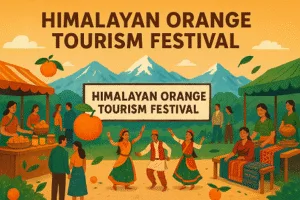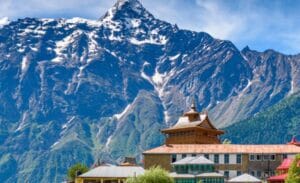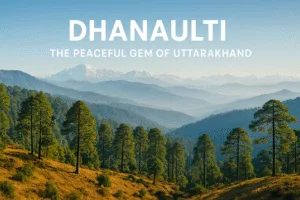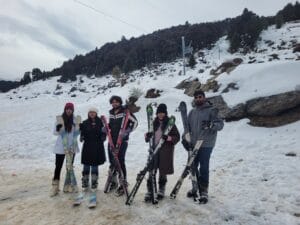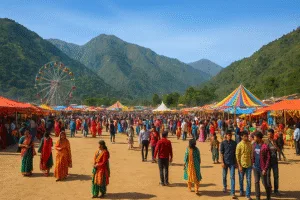By – Mohit Bangari
Flora of Valley of Flowers – Rare Himalayan Blooms

Mohit Bangari
Explore Himalaya With Me!!
Facebook
Email
WhatsApp
Twitter
LinkedIn
Tumblr
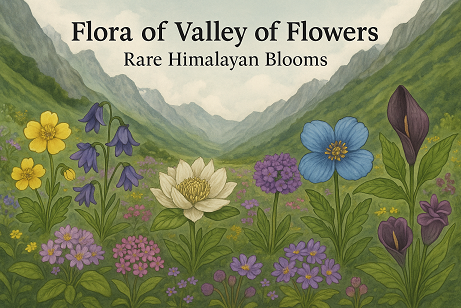
The Valley of Flowers in Uttarakhand is not just a trekking destination. It is a living museum of Himalayan flowers, many of which are found nowhere else in the world. Situated at an altitude of 3,250–3,650 metres, this UNESCO World Heritage Site is a paradise for botanists, photographers, and nature lovers.
When the snow melts in summer, this high-altitude valley transforms into a colourful carpet of blooms. Over 500 species of flowering plants grow here, making it one of the richest alpine floral zones in the Himalayas.
Table of Contents
Seasonal Bloom Cycle of the Valley
The valley is open to visitors from June to October, but the flower show changes every few weeks.
June – Early Growth Stage
Fresh greenery appears after snowmelt. Small buds of alpine herbs begin to emerge.Mid-July to August – Peak Bloom
This is the best time to visit for the full display of Valley of Flowers flora. Dozens of colours mix – purples, blues, pinks, whites, and yellows.September – Late Bloom
Flowers start to fade, and autumn colours take over. Some late-blooming species still appear, especially yellow and white flowers.
Main Categories of Flora in the Valley
Alpine Meadow Flowers
These are small, hardy flowers that bloom directly on the grassy slopes and flat valley floor.Moist Zone Plants
Found near streams and marshy patches created by melting snow.Shrub & Bush Plants
Grow on the drier slopes and edges of the valley.Medicinal Himalayan Herbs
Used in Ayurveda and traditional Tibetan medicine.
Rare and Famous Himalayan Flowers Found Here
1. Brahmakamal (Saussurea obvallata)
State flower of Uttarakhand.
Grows at higher altitudes (near Hemkund Sahib, upper slopes of the valley).
Blooms at night, has a sacred status in Hindu rituals.
2. Blue Poppy (Meconopsis aculeata)
One of the most striking Himalayan flowers with a deep sky-blue colour.
Rare and highly photogenic.
3. Himalayan Bellflower (Campanula latifolia)
Purple-blue hanging bells found in clusters along grassy patches.
4. Himalayan Cobra Lily (Arisaema)
Named for its hood-like petal resembling a cobra’s head.
Found in shady, damp areas of the valley.
5. Marsh Marigold (Caltha palustris)
Bright yellow flowers near streams and marshes.
6. Himalayan Primula (Primula denticulata)
Round clusters of tiny flowers in shades of pink, purple, and white.
7. Himalayan Edelweiss (Leontopodium himalayanum)
Woolly white flowers adapted to cold. Symbol of purity.
8. Geraniums
Several species, mostly purple and pink, spread across meadows.
9. Anemones
White, purple, and blue varieties scattered all over the valley.
Medicinal Plants of the Valley
Dactylorhiza hatagirea (Salampanja) – Used for stamina and strength.
Picrorhiza kurroa (Kutki) – Known for its liver-healing properties.
Nardostachys jatamansi (Jatamansi) – Calming herb, used for stress relief.
Aconitum ferox (Vatsanabha) – Poisonous in raw form but used in controlled Ayurvedic preparations.
Note: Collecting plants is strictly prohibited here.
Flora and River Connection
The Lakshman Ganga and Pushpawati rivers provide constant moisture to the valley. Many rare Himalayan flowers grow only near these water sources where the soil stays damp during the blooming season.
Wildlife and Pollination
The Valley’s flowers attract bees, butterflies, beetles, and birds like the Himalayan monal. These help in pollination and maintain biodiversity in the fragile alpine ecosystem.
Photography & Observation Tips
The first two weeks of August give the richest mix of colours.
Carry a zoom lens to capture delicate blooms without touching them.
Walk slowly – many flowers are tiny and grow low to the ground.
Best Spots Inside the Valley for Flora Viewing
Near the Entry Bridge – Rich in geraniums and marigolds.
Pushpawati River Banks – Home to primulas and anemones.
Towards Tipra Glacier – Higher-altitude flowers like brahmakamal.
Flora Conservation Rules
The Valley of Flowers is part of Nanda Devi Biosphere Reserve. Visitors are not allowed to camp inside the valley, pluck flowers, or disturb wildlife. This strict protection is the reason the valley’s flora is still untouched.
The Valley of Flowers flora is not just a tourist attraction – it’s a living example of how nature adapts to survive in extreme Himalayan conditions. Each bloom here is a reminder of the delicate balance of life at high altitudes.
Also Read
You can also explore more on Himalayan treks like Darma Valley, Adi Kailash, and others on my website mohitbangari.com, where I share full guides, routes, permit tips and cultural info.
Do you know about Ramman festival of Salud-Dungra village? It’s one of the intangible world cultural heritage of India in UNESCO. You can read a detailed article on this topic here.
Facebook
Email
WhatsApp
Twitter
LinkedIn
Tumblr
Related Post
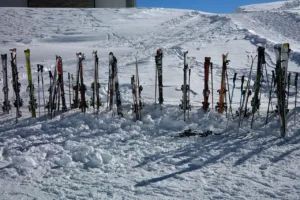
Adventure
Mohit Bangari
30 November 2025

Mohit Bangari
Explore Himalaya With Me!!


Explore the beauty and cultures of the Himalayas, from Jammu and Kashmir to Arunachal Pradesh, Tibet and Nepal. My blog shares stories, pictures, and fun articles about this amazing region. Come along on a journey where each mountain has a tale and every valley hides a treasure. Join me as I discover the magic of the mountains together.
Welcome to my Himalayan Adventure!

